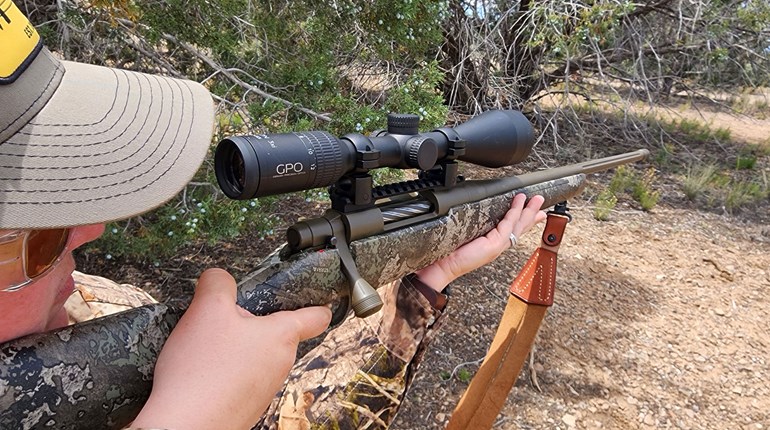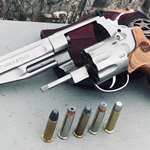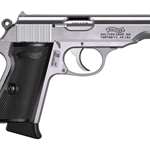
Over the past few years, my wife Rosemarie and I have been asked by women how to get started hunting, and what did she do to get ready for her first Western hunt. Although she had long been a hard-core Pennsylvania turkey and deer hunter, when she had an opportunity to hunt Wyoming pronghorn, she had the same questions I once had some 35 years earlier for my first antelope hunt. Here, in her words, is how she prepared.
I first made a checklist of what I needed to do in preparing myself for the hunt as well as becoming totally familiar with the necessary equipment. Then as I prepared, I soon realized how such information could be helpful to others. What was also interesting is that once word got out about my upcoming adventure, many of my female colleagues stated that they would have no idea of how to prepare if they would be going on such a hunt. These were individuals who were whitetail hunters, but have only hunted the dense whitetail woods locally. One colleague had stated that she would love such a family hunt and would appreciate some help on how to get started.
Keeping in Shape:
Once I established a daily workout routine, the easiest activity was to begin walking more after work; if we had a meeting at another building, I tried to walk to it instead of drive. Remember, if you are easily exhausted, it is difficult to fire one’s firearm with precision at game.
Firing under Pressure:
I soon realized I needed to focus more on firing under pressure. To do that, I began shooting sporting clays, skeet and steel targets on a regular basis. The firearm you will hunt with is the primary one to use when practicing. That said, just shooting, even with a rimfire, will get you into the mindset that every time the trigger is pulled, the target should be hit. Here is where shooting sporting clays or skeet while competing with others is good practice for shooting under pressure.
Long Range Training:
Since I was hunting with a Thompson/Center Arms Encore centerfire rifle, I did a lot of practice with a T/C Encore rimfire so to save money on ammunition and to shoot more. Then I would fire a few 7mm-08 Remington rounds and to be honest, it is all the same except for a little recoil and increased report. This is also why electronic muffs are great for the hunter. Wear them in practice and when on that hunt!
Getting the Range:
Know how to rapidly use a range finder since distance and bullet drop at whatever range is vital. My husband George tapes such data to the top of his handgun scope and does the same to the top of my rifles.
Taking a Rest:
Using shooting sticks or whatever is available to steady ones firearm is critical for an accurate shot, particularly if it’ll be over 50 yards…and out West, all shots are past 50 yards. On my hunt, I took shooting sticks which were a solid tripod my husband had made with dowels. By using this tripod with the top part covered by rubber tubing which gripped my rifle, any movement was minimal.
Protect Those Feet:
Boots can make or break your adventure. On such hunts, you will likely move frequently, which could mean a lot of walking and even some climbing. If your boots are uncomfortable, a simple blister can turn any hunt into a miserable experience and that applies to anywhere you may hunt.
Optic Considerations:
Back East when hunting whitetail, I usually use 8 or 10 power binoculars due to antler restrictions—I need to be able to count points. Before that regulation, I usually used a 6 or 8 power. Where antelope roam, a good 10 or 12 power is recommended! Here is where quality glass counts, since you will be looking through them for hours. Bad-quality glass can cause eyestrain and headaches. To rapidly utilize a binocular, practice looking at a distant target and keeping focused on it while you bring the binocular to your eyes.
Our Hunt:
Our adventure began at 7:00 a.m. with our outfitter, Kelly Klause, picking us up at the motel for our destination, the 89,000-acre Cole Creek Ranch. On the way, I asked Kelly questions that would help me better understand hunt procedures he preferred. Thanks to his explanations, once we approached the main gate of the ranch, I felt confident that I understood the strategies we would be using.
Once we were situated behind a rock on a hilltop, Kelly signaled to me where he saw a big pronghorn. Then, with the shooting sticks I had previously been using to help me climb, I listened to Kelly’s instructions as I positioned myself. With my rifle solidly rested and the distance established around 200 yards, I got on him, fired and he went down. Wow! Then about four hours later, George dropped one with his handgun, also in 7mm-08 Remington, at around 100 yards. What a great adventure for us as a couple!
Taxidermy:
Due to transportation expenses, I paid a taxidermist to prepare my cape so it could be sent to my local taxidermist, a family friend back home. I did this to save on shipping of a completed mount.
Meat Processing:
Since after the hunt we had four days left and then a day in Denver before flying home to Pennsylvania, we elected to pay for processing and donate the meat to a women’s shelter. We eat what we shoot, but given the cost of getting this meat home and the possibility of spoilage, this was our best option. With that donation, we were assured it all would be used by those less fortunate than we and that is some of what hunting is all about—sharing the harvest.















































